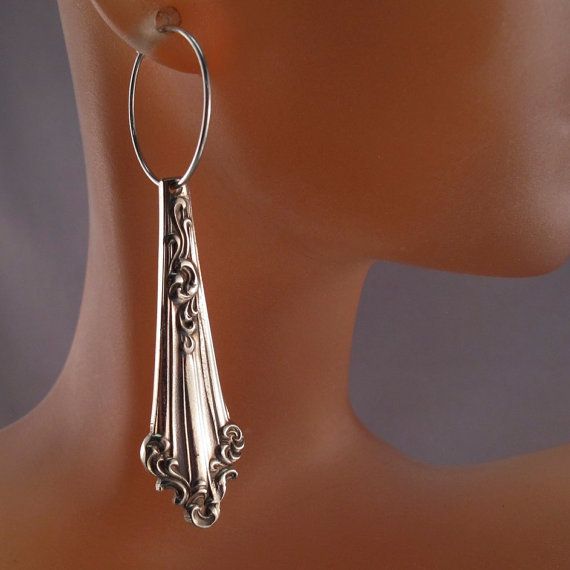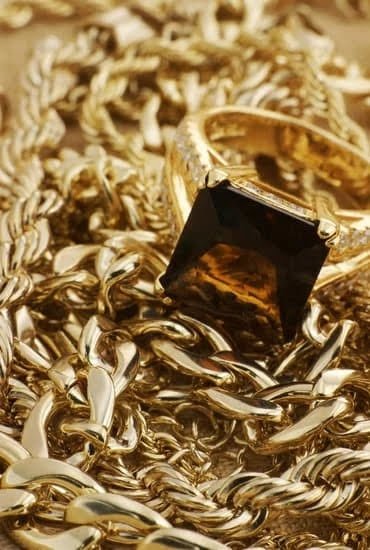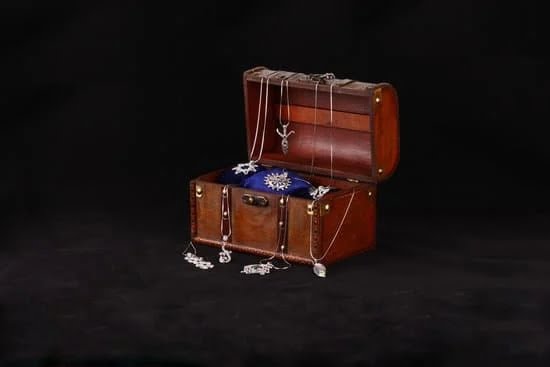The history of stainless steel in jewelry dates back to its discovery in the early 20th century. Since then, stainless steel has become a popular material in the fashion and accessories industry due to its durability and versatility. In this article, we will explore the origins, evolution, and enduring appeal of stainless steel in jewelry design and fashion trends.
Stainless steel has a long history of being utilized in various industries, including jewelry making. Its resistance to corrosion, staining, and rusting made it an attractive material for creating timeless pieces that can withstand everyday wear. Over time, stainless steel jewelry has evolved from simple designs to more intricate and innovative styles that cater to diverse tastes and preferences.
As we delve into the exploration of stainless steel in jewelry, we will uncover its early uses and origins, its evolving design trends, as well as its growing popularity and sustainability. We will also examine the benefits of stainless steel jewelry, its environmental impact, and how it is shaping the future of fashion accessories.
Join us on this journey through the fascinating world of stainless steel jewelry and discover why it continues to capture the hearts of many individuals seeking stylish yet durable adornments.
The Origins and Early Uses of Stainless Steel in Jewelry
Stainless steel has a rich history in the world of jewelry. The use of stainless steel in jewelry can be traced back to the early 19th century when it was first developed for industrial applications. The corrosion-resistant properties of stainless steel made it an ideal material for items that required durability and strength, leading to its eventual incorporation into jewelry design.
One of the earliest known uses of stainless steel in jewelry was during World War II when it was utilized to create military identification tags, also known as “dog tags.” These tags were made from stainless steel due to its ability to withstand harsh conditions and resist corrosion, making them a reliable form of identification for soldiers in the field.
As time progressed, stainless steel began to gain traction in the jewelry industry for its unique aesthetic appeal and affordability. In the 1980s, stainless steel jewelry became increasingly popular thanks to its sleek and modern look, giving rise to a new era in jewelry design. Today, stainless steel is a staple material for both men’s and women’s jewelry, offering a contemporary alternative to traditional precious metals like gold and silver.
| Year | Significant Event |
|---|---|
| Early 19th century | Stainless steel developed for industrial use |
| World War II | Stainless steel used for military identification tags |
| 1980s | Rise in popularity of stainless steel jewelry |
The Evolution of Stainless Steel Jewelry Design
Stainless steel has a rich and fascinating history in the world of jewelry design. From its early uses to its modern popularity, the evolution of stainless steel in jewelry has been nothing short of remarkable.
### The Early Adoption of Stainless Steel in Jewelry.
When stainless steel was first discovered in the early 20th century, it was primarily used for industrial purposes due to its durability and resistance to corrosion. However, jewelers soon recognized the potential of this resilient material and began incorporating it into their designs. In the 1980s, stainless steel jewelry gained popularity as an affordable alternative to precious metals, and its sleek, metallic look appealed to a wide audience.
### The Rise of Innovative Designs.
As stainless steel jewelry grew in popularity, designers began experimenting with new techniques and styles. From minimalist pendants to intricate bracelets, stainless steel allowed for countless design possibilities. Its ability to be molded into various shapes and sizes made it a versatile medium for creative expression. Additionally, advancements in technology have allowed for more intricate engraving and etching on stainless steel jewelry, making it a favorite among those seeking unique and personalized pieces.
In recent years, stainless steel jewelry has enjoyed a resurgence in popularity thanks to its compatibility with modern trends. From bold statement pieces to delicate everyday wear, stainless steel has proven itself as a timeless material that can adapt to changing fashion preferences. As more people seek sustainable and long-lasting options for their accessories, the demand for high-quality stainless steel jewelry continues to grow.
Stainless steel’s journey from industrial material to fashionable accessory is a testament to its enduring appeal in the world of jewelry design. As technology continues to advance and consumer preferences evolve, there is no doubt that stainless steel will continue to play an integral role in shaping the future of jewelry fashion.
The Popularity and Trend of Stainless Steel in Jewelry
Stainless steel jewelry has risen in popularity over the years, becoming a major trend in the fashion industry. The sleek and modern look of stainless steel jewelry has become highly desirable for both men and women, with a wide variety of designs to choose from. From classic styles to more contemporary pieces, stainless steel jewelry has made its mark as a popular choice for those seeking accessories that are both stylish and durable.
The rise in popularity of stainless steel in jewelry can be attributed to its affordability and low maintenance. In addition to being cost-effective, stainless steel is also resistant to tarnishing, corrosion, and scratches, making it an ideal material for everyday wear. Moreover, this type of jewelry is hypoallergenic, making it suitable for those with sensitive skin or metal allergies.
Another reason for the popularity of stainless steel in jewelry is its versatility. The material allows for intricate designs and detailing that can appeal to a wide range of tastes. Whether it’s simple and minimalist or bold and statement-making, there is a piece of stainless steel jewelry for every style preference. Additionally, stainless steel can easily be combined with other materials such as gold, silver, and gemstones, further expanding the possibilities for unique and personalized jewelry pieces.
- Durability
- Affordability
- Versatility
The Durability and Benefits of Stainless Steel Jewelry
Stainless steel has a rich history in the world of jewelry making. The use of stainless steel in jewelry can be traced back to the early 19th century, where it was primarily used in industrial applications due to its resistance to corrosion and staining. However, it wasn’t until the mid-20th century that stainless steel started gaining popularity in the jewelry industry for its durability and unique aesthetic appeal.
One of the key benefits of using stainless steel in jewelry is its exceptional durability. Unlike traditional precious metals like gold and silver, stainless steel does not tarnish or corrode, making it an ideal choice for everyday wear. Its strength and resistance to scratches also make it a popular choice for those with an active lifestyle. Additionally, stainless steel jewelry is hypoallergenic, making it a great option for individuals with sensitive skin or metal allergies.
In addition to its durability, stainless steel offers several other benefits as a material for jewelry making. It is known for its lustrous appearance and ability to retain its shine over time.
Stainless steel also allows for intricate designs and detailing, making it a versatile choice for creating unique and contemporary pieces. These qualities have contributed to the growing trend of using stainless steel in modern jewelry design, appealing to a wide range of consumers looking for stylish and long-lasting accessories.
| Key Benefits | Details |
|---|---|
| Durability | Stainless steel does not tarnish or corrode, making it ideal for daily wear. |
| Hypoallergenic | Suitable for individuals with sensitive skin or metal allergies. |
| Visual Appeal | Lustrous appearance and ability to retain shine over time. |
The Versatility and Diversity of Stainless Steel Jewelry
Stainless steel jewelry is known for its versatility and diversity, making it a popular choice for both men and women. Its ability to be crafted into a wide range of styles, from sleek and modern to intricate and ornate, has contributed to its popularity in the fashion industry.
Styles and Designs
Stainless steel jewelry comes in a variety of styles and designs, appealing to different tastes and preferences. From minimalist and understated pieces to bold and statement-making accessories, there is something for everyone. The use of this metal in jewelry design allows for creative innovation, resulting in unique and eye-catching pieces that stand out.
Applications in Jewelry Making
Stainless steel’s versatility extends to its applications in jewelry making. It can be easily combined with other materials such as leather, gemstones, or enamel to create dynamic and multi-dimensional pieces. Whether it’s a simple pendant or a complex multi-strand bracelet, stainless steel provides endless possibilities for creating stunning jewelry.
Unisex Appeal
One of the key benefits of stainless steel jewelry is its unisex appeal. The versatility of the metal allows for the creation of both masculine and feminine designs, making it suitable for all genders. This inclusivity has contributed to the widespread popularity of stainless steel jewelry across diverse consumer markets.
With its unmatched versatility and diverse range of designs, stainless steel continues to be a favored material in the world of jewelry design. Its ability to cater to different tastes, withstand daily wear, and offer timeless appeal has solidified its place as a staple in modern fashion. As trends continue to evolve, stainless steel will likely remain an enduring choice for those seeking stylish and durable accessories.
The Sustainability and Environmental Impact of Stainless Steel Jewelry
Recyclability
One of the main reasons why stainless steel has gained popularity in the realm of sustainable jewelry is its recyclability. Unlike other metals, stainless steel can be recycled without losing its durability or quality. This means that old or unwanted stainless steel jewelry can be repurposed into new pieces, reducing waste and the need for new raw materials.
Low Impact Production
Stainless steel jewelry also boasts a low impact production process. The manufacturing of stainless steel involves fewer chemicals compared to other metals, reducing the environmental footprint of the production process. Additionally, the long lifespan and resilience of stainless steel means that less frequent replacement is needed, further minimizing its overall environmental impact.
The Importance in Sustainable Fashion
As consumers become more conscious about their environmental impact when it comes to fashion choices, sustainable materials like stainless steel are becoming increasingly sought after. The history of stainless steel in jewelry as an environmentally friendly option makes it an attractive choice for those looking to make more eco-conscious purchasing decisions without compromising on style or quality.
The usage of recycled materials alongside low-impact production techniques underpins the role of stainless steel in making a positive contribution towards sustainable fashion practices.
The Future of Stainless Steel in Jewelry Design and Fashion Trends
In recent years, stainless steel jewelry has started to gain more attention and popularity. One of the main factors contributing to this surge in popularity is the durability of stainless steel. Unlike other materials used in jewelry, stainless steel does not tarnish or corrode, making it an excellent choice for everyday wear. Additionally, stainless steel is hypoallergenic, making it suitable for those with sensitive skin. These practical benefits have made stainless steel jewelry a preferred option for many consumers.
Another factor that has contributed to the rise of stainless steel in jewelry design and fashion trends is its versatility and diversity. Stainless steel can be easily manipulated into a wide range of designs, from sleek and modern pieces to intricate and ornate styles.
This versatility allows designers to create unique and innovative pieces that cater to various tastes and preferences. As a result, stainless steel jewelry has become a favorite among both minimalist fashion enthusiasts and those who prefer bold statement pieces.
Looking ahead, the future of stainless steel in jewelry design looks promising. With advancements in technology and manufacturing processes, there is great potential for even more creative and complex designs using this material.
As sustainability continues to be a significant concern in the fashion industry, stainless steel’s recyclability and environmental impact will likely play an essential role in shaping future trends in jewelry design. As such, it can be anticipated that the appeal of stainless steel in jewelry will continue to endure as consumers seek out stylish, durable, and eco-friendly options for their accessories.
The history of stainless steel in jewelry shows that it has stood the test of time due to its durability, versatility, and sustainability. As we look towards the future, it is clear that these qualities will continue to drive the continued evolution of stainless steel in jewelry design and fashion trends.
Conclusion
Stainless steel has come a long way in the world of jewelry design, from its early origins to its enduring popularity today. The history of stainless steel in jewelry is marked by its evolution, durability, versatility, and sustainability. As we have seen, stainless steel jewelry has become a trend that is here to stay.
The origins of stainless steel in jewelry can be traced back to its use in industrial and engineering applications. Over time, designers and artisans began to recognize the potential of this metal for creating unique and stylish pieces. Its durability and resistance to tarnishing made it an attractive option for everyday wear.
Today, stainless steel jewelry continues to gain popularity for its affordability, modern aesthetic, and environmental sustainability. This metal offers endless design possibilities, making it a favorite among both traditional and contemporary jewelry enthusiasts. As we look towards the future, it’s clear that the enduring appeal of stainless steel in jewelry style and design will continue to make an impact in the fashion industry.
Frequently Asked Questions
When Was Stainless Steel Used in Jewelry?
Stainless steel started being used in jewelry in the early 19th century, when it was primarily utilized for men’s accessories such as cufflinks, tie pins, and watches. It gained popularity due to its durability and resistance to tarnishing.
When Did They Start Using Stainless Steel?
The use of stainless steel in industrial applications began in the early 20th century, with its widespread adoption in various industries due to its corrosion resistance, strength, and ability to maintain its appearance over time. It wasn’t until later that it became popular in jewelry making.
How Can You Tell if Jewelry Is Real Stainless Steel?
There are a few ways to determine if jewelry is real stainless steel. One method is to use a magnet – if the jewelry is attracted to the magnet, then it likely contains iron and is not pure stainless steel.
Another way is to look for any discoloration or signs of tarnishing, as authentic stainless steel should remain shiny and unblemished with regular wear and tear.

Welcome to my jewelry blog! My name is Sarah and I am the owner of this blog.
I love making jewelry and sharing my creations with others.
So whether you’re someone who loves wearing jewelry yourself or simply enjoys learning about it, be sure to check out my blog for insightful posts on everything related to this exciting topic!





